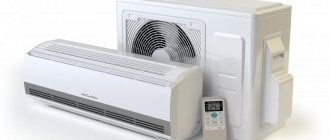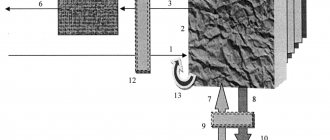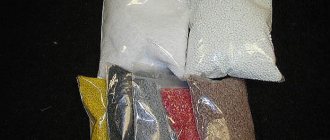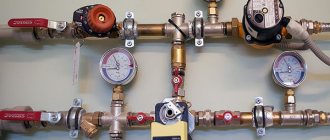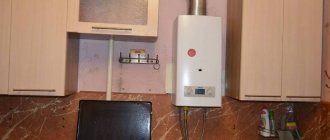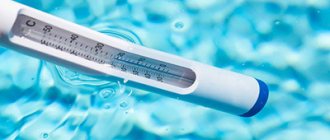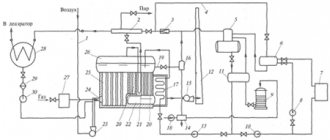Parameters for starting heating
As autumn approaches, the temperature outside becomes lower and lower, people touch their batteries every day and hope that today they will become hot. If this does not happen, then the residents look for the culprits, but in fact, all standards for the supply of heat to houses are specified in Resolution No. 354 of 2011.
This document states that heat is supplied at an outside temperature of 8 degrees Celsius, if it lasts for five days in a row . If this indicator fluctuates in one direction or the other over the specified time, then the radiators and risers in the apartments will remain cold.
Heat is supplied only on the sixth day and, as a rule, in most cases the heating season begins on October 15 and ends on April 15.
In this video you will learn the temperature standards in the apartment:
What temperature should the batteries be?
The heating season begins in autumn. There is no exact start date, but there are certain rules for heat supply. If the outside temperature stays around +8 degrees Celsius for 5 days, then on the sixth day the heating is turned on. Temperature indicators indoors depend on several components:
- battery temperatures;
- heat output inside a living space;
- apartment area;
- frequency of room ventilation;
- location of rooms in the general structure of the house (corner apartments and colder rooms);
- construction and insulation materials for house walls.
According to Government Decree No. 354 of May 6, 2011, the following temperature standards in the apartment are provided:
- residential part: +18° C;
- corner room: +20° C;
- kitchen: +18° C;
- sanitary facility: +25° C;
- landing: +16° C;
- elevator: +5° C;
- basement: +4° C;
- attic: +4° C.
It should be noted that in the Northern regions the temperature regimes are slightly higher (in a living room: +20° C, in a corner room: +22° C). Measurements are made with a special thermometer, which must be located no lower than 1.5 m above the floor and no closer than 1 m to the wall. Measurements are carried out within 10 minutes.
See also: The roof is leaking in an apartment building - where to go and what to do?
The batteries must warm the room to the above values. Otherwise, residents have the right to expect a recalculation of utility bills. Permissible deviation of the water temperature in the batteries during the daytime: 3° C. At night (from 00:00 to 05:00) - up to 5° C. A greater decrease in temperature is not allowed except in emergency situations.
According to the standards approved by GosStroy Resolution No. 170 of September 27, 2003, when supplying water from bottom to top, the following temperature conditions are established:
| Outdoor temperature (degrees Celsius) | Feed pipe (degrees Celsius) |
| +5 | +50 |
| +4 | +53 |
| +3 | +56 |
| +2 | +59 |
| +1 | +62 |
| 65 | |
| -1 | +67 |
| -2 | +70 |
| -3 | +73 |
| -4 | +76 |
Important: in accordance with SNiP - 01/41/2003, the maximum permissible water temperature in a two-pipe system is 95 ° C, in a single-pipe system - 105 ° C.
Standards for an apartment
Temperature standards in heating radiators are different for a particular room. The air in apartments should be heated to the following level:
- living area and kitchen - +18°C;
- corner apartments - +20°C;
- bathroom and toilet - +25°C.
Corner apartments should be heated more strongly due to the presence of cold corner walls. The standards for common premises are slightly different:
- entrance — +16°C;
- elevator — +5°C;
- attic and basements - +4°C.
Measurements in a residential area are made on the internal walls no closer than a meter from the outer wall and one and a half meters from the floor level.
If the parameters do not comply with the standards, the consumer must notify the management company. After the required checks, the heat charge can be reduced by 0.15% per hour of deviation from the standards.
Water temperature in central heating radiators: norm in radiators according to GOST
Many modern residential apartments are equipped with autonomous heating. There is no question of norms here. Everyone sets the water temperature in the radiators as desired and pays according to the meter. However, most houses still have central heating, where the temperature in the radiators is regulated by regulations. When it gets cold in the apartment, people wonder what the normal temperature of the water in the central heating radiators is.
Battery temperature
There are minimum and maximum standards. Sometimes, even when heating is started, there is not enough heat in the room due to the fact that the temperature of the radiators is far from the standards. The reason for this is the banal airiness of the system. You can fix the problems with the help of a specialist or yourself using a Mayevsky crane.
If the problem arises due to worn-out riser pipes or batteries, then you simply cannot do without the help of specialists. If the heating system did not work and the air in the apartment was colder than specified in GOST standards, then this entire period is not subject to payment.

There are no minimum temperature standards for heating radiators, so it is customary to rely on the air parameters in the apartment. Normal air parameters during the heating period are +16…+25°C.
To document that the temperature of the heating system does not meet the norm, it is necessary to invite an authorized representative of the heating service provider. What the water temperature in the batteries should be is described in SNiP 41−01 of 2003:
- If a two-pipe design is used in the room, then 95°C is the maximum.
- The norm for a single-pipe design is +115°C.
- The winter temperature norm for heating radiators in an apartment is +80…+90°C. If it approaches +100°C, then urgent measures must be taken to prevent water from boiling in the system.
Although many battery manufacturers often specify a maximum temperature threshold that is high, you should not reach it frequently as this will damage the battery.
To ensure that the heating complies with GOST standards, you need to take your own measurements and understand what the temperature of the water in the heating radiators is:
- An ordinary mercury thermometer can be used, but then 2°C will need to be added to the result obtained.
- An infrared thermometer will also work.
- The alcohol thermometer must be tightly tied to the battery, wrapped in thermal insulation.
Housing and communal services in Russia
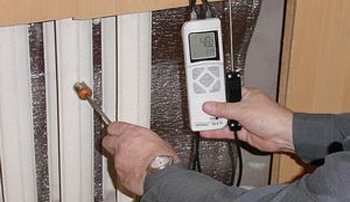
What needs to be done to correctly measure the temperature of the water in the heating pipes in the apartment?
From the series of articles “What to do if it’s cold in the apartment”
In order to measure the temperature of the water in the heating system, it is enough to measure the surface temperature of the radiator or heating pipe . But if you are such a meticulous and punctual meter, then add 1-2°C to the measured temperature, and you will get the actual water temperature - trust the laws of physics and the experience of an old power engineer.
Practical measurements of the temperature of air, surfaces of radiators and heating pipes are most convenient (and more accurate) to be carried out with a portable infrared thermometer-pyrometer with an accuracy class of 0.5 ° C, which you can buy at the nearest store selling measuring equipment. Their cost is from 1400 rubles. and ad infinitum... (by collaborating with neighbors this will not be very burdensome).
I personally use an infrared pyrometer AKIP-9301. Two years ago it cost 1,100 rubles; the expenses, I believe, have long since paid off even due to the fact that the inclusion of electric radiators has become unnecessary.
Another way is to take an ordinary household alcohol thermometer, place it with a flask of mercury in the place of the radiator you need, glue it with tape, wrap it on top with heat-insulating material (foam rubber, fur liner, etc.) - and in 5 minutes you will have a measuring device for constant use !
But! When buying a thermometer in a store, put a dozen thermometers on the counter and buy one that will show the average temperature. It’s even better if you take with you a thermometer that is known to be accurate, or a measuring device with a high accuracy class.
A more modern way: see if you have an electrical measuring device lying around in your household that has a “temperature measurement” function and a wire with a thermocouple? So, tape (glue) this thermocouple to the radiator - and measure.
You, I am sure, will agree with me that “roaming around” taking measurements around the apartment, and even more so in the basements, will be most convenient with AKIP!
I remind you that air temperature measurements, which will be carried out by an official commission from the house management company, the State Housing Inspectorate, or Rospotrebnadzor, which has arrived at your request (appeal, complaint), must be carried out in the manner and in the volume established by paragraph 4 “Control methods” of GOST 30494- 96, that is, a measuring device that has an appropriate certificate, has passed registration and state verification, with a measurement range from 5 to 40 degrees C, having a permissible error of no more than 0.1 degrees C.
Good luck with your measurements!
author: housing and communal services specialist Yuri Kalnin
See also other articles from the series “What to do if it’s cold in your apartment”:
- The main malfunctions of the heating system, their possible symptoms, causes and actions of freezing.
- About “Underfuel” in the boiler room
- About the temperature graph of the heating system
Actions in the absence of heat
If there is any discrepancy between the heating system and GOST, you need to find the cause of the cold radiators. The best person to deal with this will be the specialists of the supplier company, who will be able to officially record the temperature in the living room.
If the problem is caused by poor quality maintenance of the systems of an apartment building, then the solution to the problem lies entirely with the organization supplying the heat. At the same time, all residents should be recalculated for heat or they should be completely exempt from paying if the radiators did not heat at all.
Any application from the residents of the house to the communal structure must be considered as soon as possible, and the commission must record on the spot the fact of inadequacy of the services provided.
Knowing what the temperature of the radiators in the apartment should be and at what period the heating starts, each resident of an apartment building can determine for himself whether the temperature indicators comply with the established standards. This will help you take action in time and solve the heat problem.
A thermometer is a device that is necessary for measuring temperature. With its help you can set, regulate, and measure the temperature. A modern boiler room needs such a device, because lack of control can cause a breakdown.
Boiler house owners are forced to install devices on equipment intended for heating. There are heat generators that already have a sensor installed in the pipe.
Thus, gas devices are equipped with products that communicate directly with the control unit. This allows readings to be taken in real time.
For a solid heating boiler, devices are used that are capable of displaying the current temperature. But if there is no built-in device for the systems, then you need to think about how to measure the temperature.
Battery temperature standard
Factors affecting room heating include thermal conductivity, other technical characteristics, as well as the order of installation of batteries. Therefore, compliance with the rules for their installation and use will ensure that the temperature of the heating radiators in the apartment and in the house meets the established standards.
In addition, you should carefully consider determining the number of battery sections depending on the area of the room. For example, a device in which the coolant is heated to an identical temperature will have a different effect on the heat flow with sections 5 and 7 on it.
How to choose the right thermometer for a boiler?
There are two types of thermometers: immersion and remote .
If you are faced with the task of choosing thermometers for boilers, then you need to be extremely careful. You need to understand that such devices have a fairly simple and reliable design. It must be suitable for hot water and made from quality materials.
Many modern boilers for heating systems are already equipped with appliances . But for old-style boilers, you need to purchase such a product and install it in the appropriate place.
It is worth considering the main functions that the device performs. It is intended for:
- Displays readings of the operating temperature of the coolant . Thus, the water carrier can monitor and determine its temperature. This ensures stable operation of the entire system, including the boiler. The boiler owner who installs measuring instruments gets the opportunity to set the desired temperature and change it if necessary. It is the thermometer that can indicate problems that have arisen. If the temperature of the liquid has noticeably decreased, then it can be understood that there is a problem in the system. Such a pointer will allow you to disable the system until the problem is resolved.
- Remote control . This control method is the most convenient; it allows you to set the temperature, change it without being near the equipment. Many boilers operate automatically; measurement is carried out using special sensors. Sensors and automation interact harmoniously with each other. Due to this, you will not need to constantly be at the boiler , monitor indicators, and regulate the temperature.
How to measure coolant temperature?
The temperature of the coolant in the heating system provides for the following standards:
- Hot water in the tap should be available all year round and its temperature should be from +50°C to +70°C;
- During the heating season, heating devices are filled with this liquid.
In order to find out the temperature of the heating radiator, you need to open the tap and place a container with a thermometer. At this time, the temperature may rise by 4°C.
When a problem arises in this matter, it is tedious to file a complaint with the Housing Office, but if the batteries are airy, the complaint is written to the DEZ. A specialist should come within a week to fix everything.
There are several more ways to measure the temperature of heating radiators in an apartment building:
- Using a thermometer, the temperature of the heating pipes or the radiators themselves is measured; 1 -2°C must be added to the result obtained;
- To measure data more accurately, you need to buy a thermometer-pyrometer that can measure temperature with an accuracy of 0.5°C;
- You need to take an alcohol thermometer and place it on a certain place on the radiator, then wrap it with tape and wrap it with any thermal insulator (foam rubber, flywheel). Now it will play the role of a permanent temperature meter of the heating system;
- In the case when you have an electronic measuring device at hand, for example, a multimeter, with a temperature measurement function, a wire with a thermocouple is wound to the radiator, and the temperature of the coolant is measured.
If you are not satisfied with the temperature of your heating devices or any other parameters of the coolant, then after filing a complaint a commission will come to you whose task will be to measure the temperature of the circulating fluid in the heating system.
They must strictly act in accordance with paragraph 4, which is specified in the “Control Methods” of GOST 30494−96, and the device must have registration, as well as verification and quality certificates. The measurement range should range from +5 to +40°C, the permissible error should be within 0.1°C.
What types of thermometers are there?
Heating allows the use of a variety of pipe devices. Many people have to think about which thermometer to measure temperature with. But the installation of a thermometer on a pipeline depends precisely on the characteristics of the system being used or designed. It is worth considering the types of sensors.
ATTENTION! Some sensors are designed for temperatures up to 100 degrees, but the standard temperature in a heating system is 40-50 degrees.
Liquid glass thermometers
Such a measuring device is a device that must be mounted at the location where the measurement will be taken. The device is installed in the system, and mercury .
Some manufacturers suggest using a device that is filled with methylbenzene, kerosene or alcohol. When choosing a substance, you need to take into account the environment in which the thermometer is located.
So, one device is selected for water heating, and another for capillary gas heating. This product is considered the simplest.
Manometric thermometers
This option has a more complex design when compared with a glass device. If we consider the main elements that a pressure gauge has, we need to mention:
- cylinder , which is located at the control point where the temperature is measured;
- capillary , which is somewhat reminiscent of a connecting tube;
- pressure gauge , which has a spring design.
Normal water temperature
It was once believed that water for central heating should be heated to 100 degrees on the outlet and 60 degrees on the return flow. At that time there was no good equipment to control the heating of water for central heating. This approach is not cost effective. Rising fuel costs increase utility bills for homeowners.

Modern equipment allows the use of low-temperature heating of apartments according to standards. This means that the water temperature standards in heating radiators are not constant. They become attached to external factors. The following are taken into account:
- Heat loss from buildings. It is theoretically possible to build a house without heat loss. To do this, you will need to cover it with insulation of at least a meter thick. In fact, 150 mm of high-performance insulation is considered good thermal insulation. But heat loss will still occur through the walls, floor and roof. The higher these losses, the more heating the home needs to create a comfortable environment.
- Heat source indicators. If the boiler does not meet the design requirements, then more heating of water for heating is required.
- Heat transfer from the metal from which pipes and batteries are made. If the metal of the pipes has low thermal conductivity, this will prevent heat loss during transportation from the heat source. Batteries, on the contrary, must have high thermal conductivity in order to transfer heat to the maximum. Cast iron batteries have lower thermal conductivity compared to aluminum and bimetallic ones. For equal heating, the water temperature must be higher in cast iron.
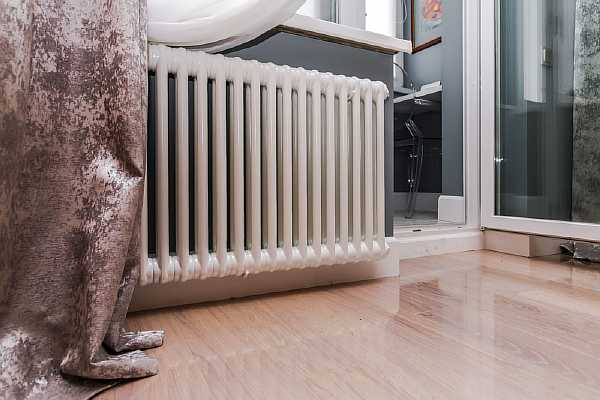
When assessing the comfort of housing, the temperature in the heating system is not the main indicator. Temperature standards refer to the state of the apartment's atmosphere.
Thermal indicators of central heating water
The normal temperature of the water in the heating battery is closely related to weather conditions. The standard indicators were developed in 2003. Data for water supply from bottom to top are given in the table below.
| External air temperature | t in the supply pipe | t on the return |
| +5 | 46/50 | 39 |
| +4 | 49/53 | 41 |
| +3 | 52/56 | 43 |
| +2 | 54/59 | 45 |
| +1 | 57/62 | 46 |
| 59/65 | 48 | |
| −1 | 63/67 | 50 |
| −2 | 64/70 | 51 |
| −3 | 67/73 | 53 |
| −4 | 69/76 | 54 |
| −5 | 72/78 | 56 |
Although there are standards for water temperature for batteries, the assessment is based on the state of the air. According to GOSTs, the indicators are as follows:
- in the main rooms, according to standards, t should not fall below +18 °C;
- in corner living spaces the temperature should be +20 °C;
- in the kitchen the allowed standard is from +19 to +21 °C;
- the temperature of the toilet corresponds to that of the kitchen;
- The normal temperature in the bathroom is from +24 to +26 °C;
- interior corridor – from +18 to +20 °C;
- at night, a decrease in these indicators is allowed in accordance with the standards.
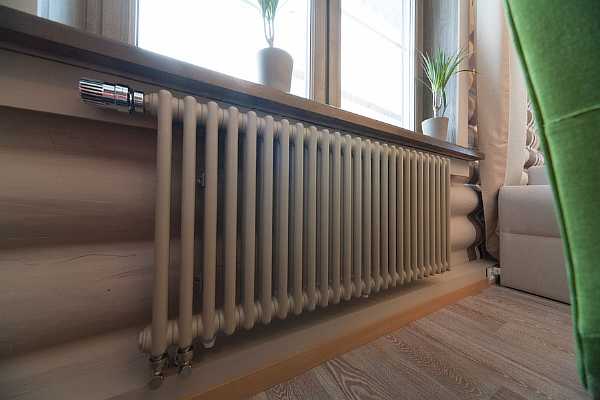
If these indicators drop below the norm, you must contact the management organization, take control measurements and demand a reduction in the payment for the service. It should be noted that the employees of the management organization take readings themselves using a device called a pyrometer.
This is a small device for non-contact temperature measurement.
When calling management company employees to check the temperature according to the standard, you should familiarize yourself in advance with the rules for working with a pyrometer. Water from radiators or radiators will not be needed for measurements. Compliance with the standard water temperature in heating devices is determined from a distance.

Managers are not interested in reducing pay. They will do everything to prove that the temperature is normal.
Features of choice
To choose a heating device, you need to study the definitions of different types and choose a suitable thermometer. The meters have the appropriate characteristics; you should pay attention to the following features:
- Connection method . If the task is to determine the temperature as accurately as possible, then experts advise making a choice in favor of submersible devices.
- It is necessary to consider whether the repair of devices is difficult.
- Working range . This indicator also affects accuracy. If the device is selected incorrectly, it may display the temperature incorrectly or stop working.
- Method of taking readings . The inertia of the device must be taken into account, that is, the speed of bringing the readings to the real level.
What should you pay attention to?
Before purchasing a pipeline device, it is worth clarifying a few points:
- The insertion must take place exactly in the place where the device is intended to be installed. That is why you need to first find a suitable place near the steam boiler and find out the method of fastening .
- You need to figure out what the appropriate temperature range . Experts advise choosing the appropriate product; its upper limit should not be too high. The larger the division scale, the greater the error may be. This error may reduce the reliability of the product.
- You need to find out in advance whether a pressure gauge . If it is not provided for in the system initially, then it can always be purchased in addition.
Checking the device
It is not enough to choose a suitable measuring device; you also need to check it after purchase. Experts say that it is best to check the accuracy of the readings .
This is necessary to ensure that the products provide accurate data. If you select a cheap device, then you can suspect that its readings will be inaccurate. You should not save on purchasing products, because a low-quality device can lead to a distortion of the real picture, a decrease in the efficiency and reliability of the system.
It is quite easy to carry out the test; for this you will need to take a device and a sensor with a remote spike for water. It is necessary to check the product near an open fire source . It will be enough to bring the thermometer to the fire for 10 seconds, and then do the same with the sensor.
Taking into account inertia, it is necessary to evaluate the readings that will appear on the instruments. You need to compare the readings on the sensor and the thermometer. The lower the difference, the more accurate the device will be.
Useful video
This video is a brief overview of two thermometers from the German company Watts.
Practicing lawyer and author of 242 articles on the site
Publication date: 2018-10-27 Update date: 2019-04-17
During cold periods, namely in winter, all living spaces must be heated. This is due to a significant drop in temperature and the appearance of frost at this time. Therefore, all kinds of systems are installed in all homes to heat the air. Autonomous heating systems can be used, or there may be a connection to a centralized mains. It is necessary to understand how to measure the temperature of the battery, since in winter the indicators must comply with the standards of SP 60.13330.2016 provided for in the current legislation.
Standards
In Russia, the heating season starts at a time when average temperatures drop below +8°C. Accordingly, this period ends when the air outside heats up above +8°C.
In different types of premises, according to the requirements, the thermometer must have the following values:
- in rooms – +18°C;
- in the kitchen – +18°C;
- in corner rooms – +20°C;
- in the bathroom – +25°C;
- on staircases – +16°C;
- in elevators – +5°C;
- in the basement floors – +4°C;
- on the roof (attic) – +4°C.
This data must be verified on indoor walls. These standards are valid only during the heating season.
Residents should also be aware that hot water heating must correspond to the figures within +50°C – +70°C according to SNiP 2.08.01.89 “Residential buildings”. You can measure the water parameter in heating devices by draining a certain amount of liquid from the heating unit into a container and simply measuring it with a thermometer.
Temperature standards in the apartment
The presence of a regulator on the battery allows you to maintain the optimal temperature in the bedroom, bathroom, kitchen and nursery. Below is a table from which you can easily find out at what temperature the room is comfortable.
Room in the cold season
Optimal temperature (C°)
Permissible temperature (C°)
The recommended standards are based on GOST 30494-2011 and, despite their advisory nature, are mandatory for residential premises with centralized heating. In a private house with an autonomous system, standards should be relied upon to create comfortable conditions for relaxation in the house.
Please note that exceeding the recommended temperature causes no less discomfort than lower temperatures. For example, in the bedroom it is easier to fall asleep at 20 C° than at 24 C°.
For a nursery, take into account the age of the child - the younger he is, the higher the temperature should be, but the permissible C° range cannot be exceeded. For a child under 3 years old, adjust the radiators to achieve 25-26 degrees, 4-8 years old - 24-25, after 9 - 23-24 C°.
In the kitchen, when the stove is turned off, the norm in degrees is 19-20, and when cooking, the permissible values rise to 26 C°. If you set the heating of the batteries to maximum, then during cooking the housewife will cook together with the borscht.
Methods for measuring water in radiators
Many people wonder how to measure the coolant parameter in an apartment? There are several ways:
- Use a regular thermometer (on the surface).
- Using an IR thermometer.
- Use an alcohol thermometer.
- Using an electrothermometer.
If you measure the coolant in an apartment with a regular thermometer, then you should add another 1-2 degrees to the final figure. The use of devices with infrared radiation provides more accurate data. The readings of an infrared thermometer (pyrometer) may differ from the actual ones by only half a degree.
To constantly measure the temperature of a heating radiator, you can use an alcohol meter. Attach it to the battery, for example, with adhesive tape and wrap it with material with thermal insulation properties (foam rubber, flywheel).
You can also use an electric thermometer for such measurements. Just tie the wire to the radiator. It will show heating indicators.
Important! If you decide to call a commission to measure the temperature of the battery, then the measuring apparatus used by specialists must be certified. All actions of workers must comply with GOST 30494, paragraph 4, section “Control methods”.
Determination of coolant temperature in batteries
The coolant in the central heating and hot water supply system is water heated to a certain temperature.
To measure the temperature of water heating in the system, the following instruments are used:
- Medical thermometer.
- Thermometer with infrared spectrum.
- Alcohol thermometer.
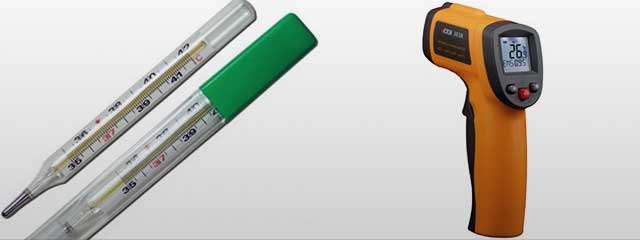
Central heating
To determine what the temperature of the heating radiators in the apartment should be, it is necessary to take into account the standards established for the coolant.
They are determined taking into account climatic conditions and are relevant if the pipe has a lower central supply to the battery:
- Ambient temperature + 6 degrees: at the entrance up to +55 degrees, at the return – up to +40 degrees.
- The temperature outside the window is 0 degrees: at the entrance +66 degrees, at the return – up to +49 degrees.
- The temperature outside the window is from -5 degrees: at the entrance + 77 degrees, at the return – up to +55 degrees.
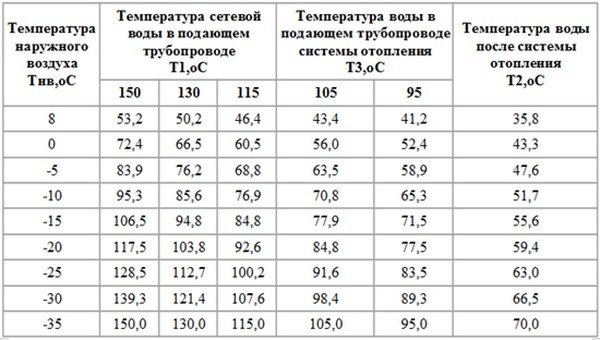
If the permissible temperature threshold decreases - in the daytime by 4 degrees, at night - by 5 degrees - a recalculation of the level of payment for central heating services is carried out without fail.
Important! Unlike a single-pipe heating system, a two-pipe heating system may have a reduced heating temperature of the coolant.
The parameters of the heat supply system are strictly regulated by current legislation, according to which the following temperature conditions of the coolant in the pipes are allowed in an apartment building:
- With a two-pipe system, the coolant temperature is +96 degrees.
- With a single-pipe system, the temperature is +116 degrees.
- The average heating temperature of batteries in an apartment ranges from +78 to 92 degrees.
Measurements of the coolant in the system can be performed in the following ways:
- Place an alcohol thermometer on the heating radiator and wait a few minutes. Add one degree to the resulting value. Instead of an alcohol thermometer, you can use a room infrared thermometer, which has a higher measurement accuracy.
- Attach an electric temperature meter to the battery with a thermocouple wire and take readings.
Hot water supply
In the cold season, the main factor is the heating temperature of the water, which should be from +64 to 76 degrees. If water is supplied in violation of temperature standards, this is fraught with an increase in water consumption and utility costs.
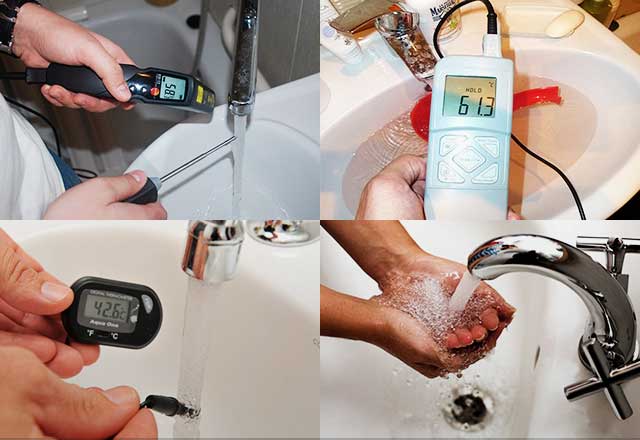
To measure the temperature of the hot water supply, place a deep container in the sink, washbasin or bathtub. An alcohol-based thermometer is placed in it and liquid is supplied from the tap.
The duration of the measurement is about 10 minutes. Possible deviation from the norm may be +/- 3 degrees.
Adjusting heating at home
If, after you have measured the heating of radiators at home with your own hands, the heating of the pipes exceeds the norm, then it should be adjusted. This can be done using special devices by hanging curtains with increased density on the windows.
But what to do if the heat is not enough? In this case, you should call the utility workers. Specialists must take measurements of data in the water supply and heating systems. Then they must draw up a final act. If non-compliance with the standard is confirmed, utility employees will resolve the problem.
If this option of calling utility services seems absurd or impossible to you, then the solution will be to insulate your home, and possibly replace the batteries with new heating devices.
When purchasing a radiator, first of all, you should pay attention to the material used to make the product. Aluminum models have the characteristics of increased thermal conductivity; therefore, they should heat the air in the room well. As for cast iron batteries, they retain heat much longer, but release it rather slowly. That is, the room will heat up for a longer time.
Heat loss can be reduced by insulating walls, window and door openings. Additionally, infrared heating can be installed. However, such systems consume the same amount of energy as other electric heaters with identical power ratings.
If you are unable or do not know how to determine the temperature of a heating device by hand or using other devices, you should immediately file a complaint with the housing maintenance office. In a situation where heating units are filled with air, a statement must be written to the Directorate for Building Operations. These services should send a specialist to you to solve the problem within 7 days.
What should be the temperature of pipes, radiators, radiators in the apartment
Residents of apartment buildings often complain about the cold indoors. One of the main reasons for this may be the low temperature of the water in the heating radiators. We have already written about the reasons why batteries are cold. What should be the temperature of the radiators in the apartment so as not to freeze? It also depends on the ambient temperature.
But it is worth considering not only the temperature of the water, but also the material from which the radiator is made. If the temperature in the heating radiators in the apartment does not satisfy the residents, then they can call a commission to take measurements. Measurements are carried out using tested devices.
This is how the temperature of the battery in the apartment is determined, the norm of which fluctuates depending on changes in weather conditions.
A device that measures surface temperature with a beam.
The quality of heating is often determined by the air temperature in the room. If you feel that the rooms are cool, you need to measure the temperature. The maximum permissible temperature is +18 degrees. If it is lower, then you need to identify the cause. The main reasons may be leaky windows and doors, but a more compelling reason is low water temperature in the radiators.
To determine what the temperature of the batteries in your apartment should be, there are special calculations. They are compiled by specialists who compare the temperature of the water in the radiators and the ambient temperature.
You need to call a special service that will measure the temperature in the heating radiators in your apartment. The obtained data is compared with the temperature graph data.
This graph has already calculated what temperature should be in the direct and return water supply pipes.
Table. Temperature graph of the ratio of heating to ambient temperature.
| Ambient temperature | Direct water temperature | Return water temperature |
| -15 | 105 | 70 |
| -10 | 92 | 63 |
| -5 | 78 | 56 |
| 0 | 65 | 48 |
| +5 | 50 | 39 |
These data are given for a single-pipe heating system, with water supplied from bottom to top.
According to the table, when the outside air temperature is, for example, -10 degrees Celsius, the return water temperature should be at least 63 degrees.
And this does not depend on which floor the measurements are taken - on the first or fifth. In a two-pipe heating system, the water temperature at -15 outside is allowed to be 95 degrees with direct water supply.
Each locality has its own temperature chart. It is approved by the city administration.
If the battery temperature in the apartment is below normal, this means that the boiler room is saving on heating. After water measurements, specialists draw up a report, and utility workers must correct all problems. At the same time, everyone has the right to demand a recalculation of heating fees.
The rent should be reduced according to the square footage of the apartment. The temperature of the water in the radiators is one of the main factors in a warm home.
According to battery temperature standards, a coolant must be supplied to the apartment, the degree of heating of which ranges between 80-85 degrees.
It is very simple to make heating with heating elements in your home, and each heat exchanger will not depend on the others. To do this, simply screw the heating element into the bottom end of the battery and connect it to the electrical network.
Here you will find everything about infrared heating of a private house: reviews, calculations and drawings.
When considering the question of how to measure the temperature of a battery in an apartment, the following methods can be distinguished:
- an ordinary thermometer (on the surface of the radiator);
- infrared thermometer;
- alcohol thermometer;
- special electrical device.
When measuring with a regular thermometer, you need to add 1-2 degrees to the result. A more accurate result will be given by an infrared device, the error of which is 0.5 degrees.
In order to regularly monitor the temperature of the water in the batteries, you can use an alcohol thermometer. To do this, the device is attached with tape to the radiator and wrapped in heat-insulating material.
The battery may not heat up evenly.
You can also use an electric version of the thermometer for measurements. To do this, a wire with a thermocouple is wound to the battery, and it takes readings of the degree of heating.
If a consumer calls a special commission to measure the temperature of heating radiators in an apartment, then their device must have a quality certificate and first pass state inspection.
The actions of specialists must comply with GOST 30494-96 (clause 4 in the “Control methods” section).
If the temperature of the heating pipes in the apartment is higher than normal, then it can be adjusted in several ways:
- using special devices;
- ventilation;
- using thick curtains.
There are special taps with which you can regulate the temperature. They are installed on each radiator. A simpler method is to ventilate the room.
You can also simply use curtains made of dense material, which will let less sunlight into the room. It is much easier to deal with high room temperatures than low ones.
What to do if the minimum temperature of the batteries in the apartment is lower than indicated in the temperature chart? To do this you should:
- call utility services;
- insulate windows, doors and walls;
- install new radiators.
If you don’t know how to check the temperature of the batteries in the apartment, you can call specialists. Also read: “Blowing and cleaning batteries.”
Utility services measure plumbing and heating systems. After this, an act is drawn up. Then, if the tenant's claims are confirmed, utility companies must increase or decrease water heating. Another way would be to install new heating radiators. Details about the installation can be found in the video:
You should pay attention to the material from which the batteries are made.
Aluminum radiators have high thermal conductivity, so they will transfer heat well. But cast iron, although they are able to retain heat longer, will release it more slowly. Because of this, the room will take a long time to warm up.
The speed of water movement also affects the temperature in the heating pipes in apartments. Don’t forget that corner apartments are always cooler, because they have more walls in contact with the street. To reduce heat loss, it is necessary to insulate the walls. Insulating windows and doors through which cold air enters will also not be superfluous.
Even the most fashionable and modern infrared heating of a private home consumes the same amount of electricity as any other electric heater of equal power, even the most ancient one.
You can read more about infrared heating and energy consumption in this article.
You can screw a thermal head into the end of the battery.
To live comfortably in an apartment, you need to monitor the temperature of the batteries. To do this you need:
- independently measure the temperature of the pipes (use regular, infrared, alcohol thermometers or a special electrical device with a thermocouple);
- call utility workers if the temperature does not meet the standards (as a rule, it is lower than required);
- if the temperature of the battery during the heating period in the apartment is higher than normal, then special taps can be used to regulate it.
A pleasant microclimate in an apartment is the key to health, so do not neglect it. In addition, the degree of air humidity plays a crucial role.
If it is too dry, respiratory problems may result. The amount of fresh air is also standardized for each room separately.
According to many experts, the standards are somewhat too high, so even if the air exchange is only half, this is quite acceptable.
Source: https://utepleniedoma.com/otoplenie/radiatory-i-batarei/temperatura-batarej-v-kvartire
